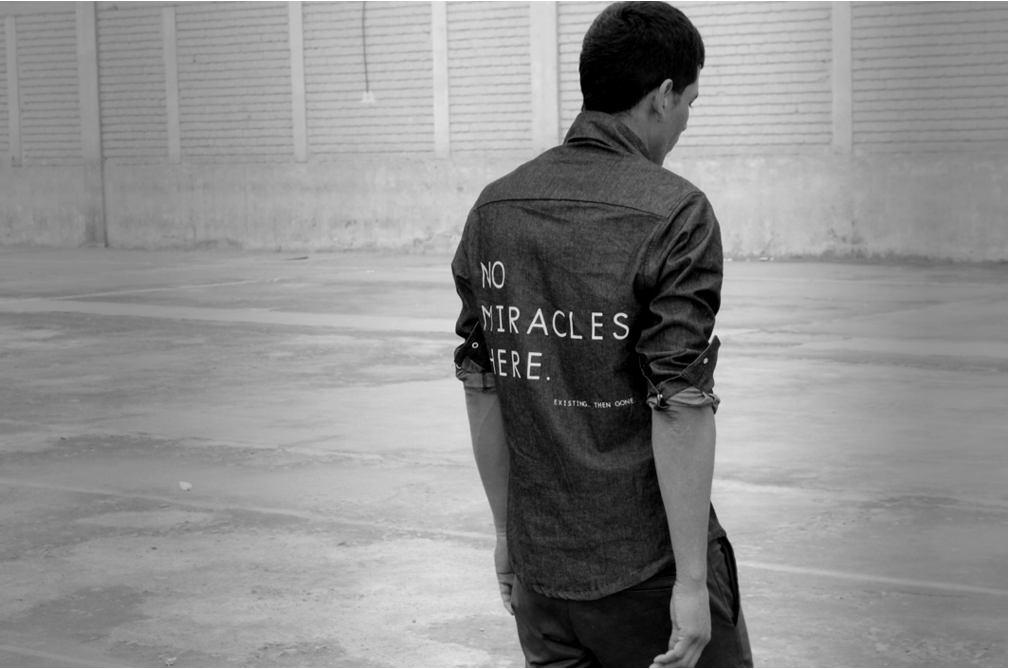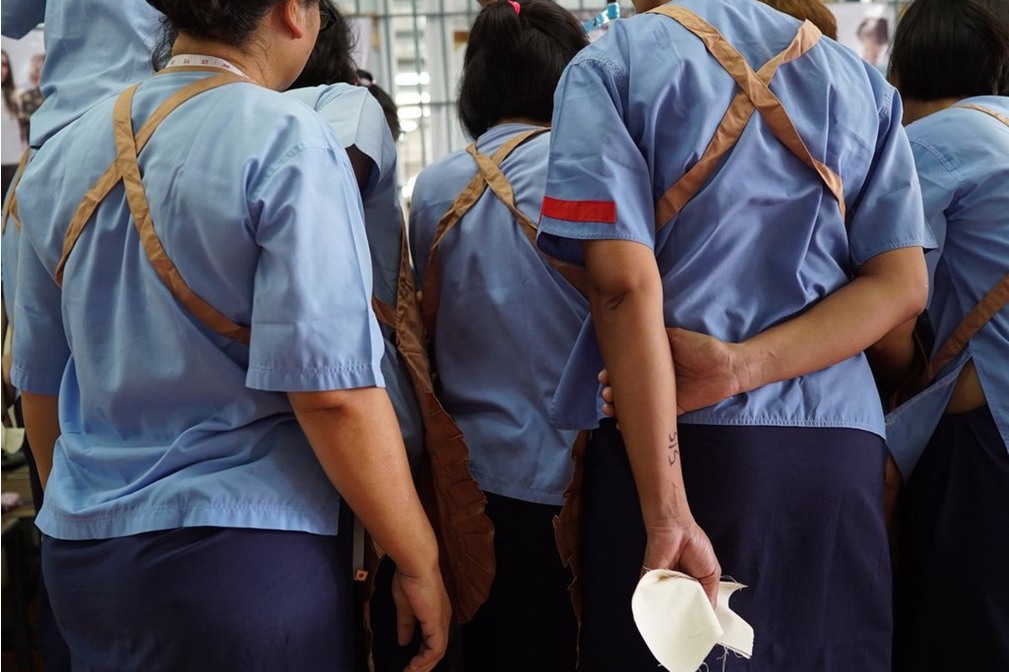The article, “The Fashion Labels whose Clothes are made by Prisoners” is written by Isabella Rosengren. It outlines that prisoners take part in making clothes for different fashion brands inside the prison to earn money for their families and shorten their prison time. Labour in prison may allude pictures of prisoners in striped uniforms working under the scorching heat, but clothing and textiles have a long-established history in prisons.
It is quite a common practice in different countries like Peru where prisoners are taught a skill that can be used in the real world to integrate with society. Many fashion labels across the globe utilize a prisoner’s skills to meet the market demand of their products. The theory that is being used to analyse the essay is the dynamic system theory and value and identity theory.
Prison labor was initially carried out as a punishment to cover the costs incurred due to the confinement. With time and rapidly changing thinking, it is now mainly used as a means of rehabilitation. Also, to teach the prisoners some skills they can utilize once their sentence ends, hoping that it would prevent them from committing the same or some other offense again. It is a way of making sure that they learn some skills to help them earn a living as soon as they step out of prison life. The better the living standards are, the more chances they will be using illegal means to make a living.
The approach used to change them falls under the dynamic system theory, which suggests that behavioral change can occur with time. The main focus is to study the pattern that can bring about a positive change in a person. Henri Poincare proposed the dynamic system theory in 1854. His theory was based on the theoretical idea behind the modern chaos theory, which suggests that to determine the cause and effect of something, an initial starting point should be given, and the cause and effect should be observed as the time passes by to see the results. (Connell, DiMercurio and Corbetta, 2017)

The prime example of the application of the dynamic system theory was evident in the Pieta clothing line. Pieta is a clothing brand with its complete production model based on clothing made by prisoners. In 2012, Thomas Jacob, a Frenchman and Pieta founder, visited a jail in Lima, Peru. He noticed that the inmates were very ambitious and wanted to learn different skills to make a living, but they lacked the opportunity. They were very far from the image an average person may have of prisoners. In the prison, sewing and knitting machines were already in place for its internal production, making it easier for Jacob to start the project. He took this as an opportunity to teach them something beneficial for them in the long run. (Abnett, 2020) This is where the dynamic system theory comes into play as the founder worked on the prisoners to bring out a transition or a new form of behavior into the system, which will, in turn, have a positive effect on them upon release from the prison. The new skills and daily routine will alter their behavior as they are likely to focus on productive tasks rather than carrying out illegal activities or offenses.
The prisoners contribute to the production, but they also design and pose as models for marketing the products. The inmates are paid a percentage of the selling (retail) price for each piece of clothing they produce. This acts as an incentive that can motivate them to work hard and earn their money through the legal and ethically correct way. This change in their behavior is linked to the dynamic system theory’s main idea, and it also highlights the identity process theory.
The identity process theory proposes the following aspects:
- What are the basic needs and requirements of a change in identity in a positive manner?
- How do individuals cope up with threats to their identity?
- What sort of motivation or incentives are given to them to protect their self-esteem and self-identity? (Bardi, Jaspal, Polek and Schwartz, 2014)
To ensure that the prisoners are motivated according to the set principles of the IPT, the prisoners have to bear the expenses of their facilities like healthcare and civil reparation as they don’t have savings or family on the outside who can help. For every four days of work carried out by an inmate for Pietà, one day is deducted from their sentence.
The money they earn is usually sent to their families or used to pay for their academic courses. When the inmates sign up for courses, their prison time is reduced by the authorities, which is a massive incentive. However, one cannot simply ignore the fact that there might be some prisoners who are learning the skill just for the sake of it. They are more likely to resort to the same illegal practices which they were doing before they were sent to jail. The IPT comes into play as it will be the main determining factor in how the incentives can transform them and alter their behavior completely.

When the prisoner is released, the value theory will determine his next course of action. The value theory outlines the fundamental value and principles that will guide people regarding how to live their lives. It points out the essential people’s evaluation, attitudes, and behavior regarding dealing with everyday aspects. The value theory helps fill the gap between prison employment and fitting them into society to start a healthy life, which helps them protect their identity. This is one way of restoring their faith in themselves and keeping their self-esteem intact again, reinforcing the main idea behind the IPT. They are likely to feel more confident when they come back into society. Society also accepts them as a part of it thus making it easier for them to adjust. As a society, it is quite normal for people to look down upon someone in jail previously, but when they have a respectable job and reputation, it is easier for them to ignore such aspects.
Based on the findings of the dynamic system theory and the identification process and value theory, a wide range of rehabilitation programs should be offered as a core function of prisons, including physical and mental healthcare, physical activities, psychosocial support, education and vocational training courses and work opportunities. They are likely to alter behavior beneficially.
Out of many concerns, a big question for any company working with prisons is perception: what will the customer think? Whether employing prisoners for work, the concerned company is guilty of “exploitation.” Moreover, customers can also criticize the brand for supporting criminals.
From the start there have been questions about the ethics of using prison labour, especially businesses making profits, sometimes prompting a storm on social media. However, there is some doubt that some of the brands, including those that are listed here, are working on the intention of giving back and offering the prisoners a chance to learn new skills and to earn an honest and decent earning for themselves. When in applying the theories in reality, this is not exploitation, but it is mainly the promotion of boosting the confidence of the prisoners to make them realize that they can fit into the normal society by learning some useful skills in the prison and applying them in their life out of prison. (Bardi, Jaspal, Polek and Schwartz, 2014)
The chief executive of campaigning group Penal Reform International has made clear that he supports the idea of inmates being able to work for companies on terms, which will not exploit them. He emphasized that this work should have a long-term benefit and contribution to the prisoner, such as recognition, i.e., (certificates) and training. However, not all the companies intend to exploit cheap prison labor but, in turn, intend to offer equal opportunities for inmates, thus keeping their self-identity in place as pointed out under the identity process theory. (Bardi, Jaspal, Polek and Schwartz, 2014)
As pointed out by Trish Mehaffey (2020), the prisoners were interviewed in which they pointed out that for the first time, they had a feeling that they are going to be successful when stepping out again in the real world. The main aim of teaching such skills is not only to make sure that it helps them earn a living so that they do not resort to criminal activities but also helps them learn social and personal development and develop self-esteem. The researcher further points out that the prisoners realize that the goals they have in their life are attainable if they utilize their skills effectively wherever it is needed. This again shows the application of both the theories as the prisoners are able to recognize the values in place and their role as an individual identity in the society.
However, at the same time in another article written by Justin George (2020), it was pointed out that the inmates are not learning as much as they should be in the prison and the main reason behind this is that they are always treated equally. Even if someone is not acquiring or learning skill as they should be, they are still given the same certification as others. It makes the competitive prisoners who wish to bring a change in their lives, feel as if there capacity and capability to achieve something is the same as the one who is not motivated enough to bring a change. Hence, the skills learned are not utilized in an effective manner in the real world.
Furthermore, this does not mean that the time spent by the prisoners should be wasted as Nelson Mandela rightly points out that, “All prisoners shall be treated with the respect due to their inherent dignity and value as human beings”. He believed that it is very important to come up with ways that can be used to reintegrate the prisoners back into the society in such a way that they don’t feel that they have been disintegrated in the past.
In conclusion, it can be seen that the application of the dynamic system and value and identity theory is useful and beneficial in real life as it deals with the problems and issues that are faced by the inmates. If applied in the right manner, the theory can offer solutions to resolve issues pertaining to the identity and the problems that an individual face while trying to reintegrate into society. Some prisoners will learn a skill, but all the efforts will go to waste as they tend to go back to their old life as soon as they step out. They should be given an initiative that can motivate them to follow the same prison routine even when they are out in the real world. It can either be done by giving them a job or giving them a certain amount of the money they earned so that they know the value of earning themselves. Hence, the two theories are applicable not only when the inmates are in prison, but it should be applied effectively when they are out in the real world because that is when they are trying to figure out their goals, and they are the most vulnerable to commit the same offenses again.
Peachy Essay essay services team offers a wide range of services including Sociology Writing Help:
– Sociology Assignment Writing Services
– Sociology Assignment Help
– Sociology Essay Help
– Sociology Essay Writing Service
– Sociology Dissertation Writing Services
– Sociology Dissertation Help






